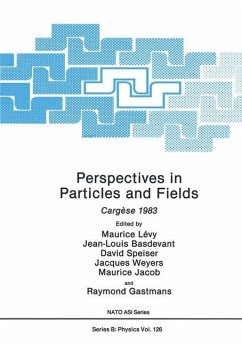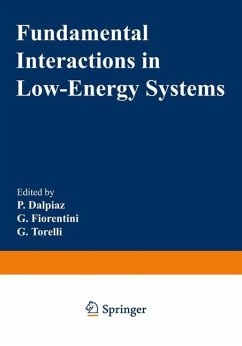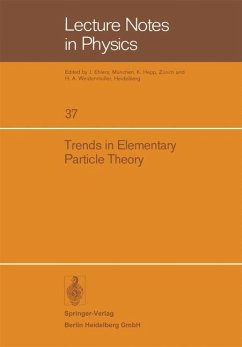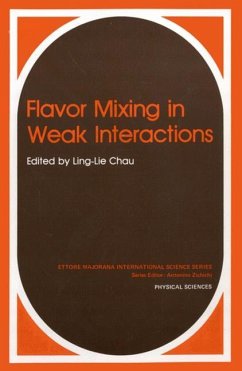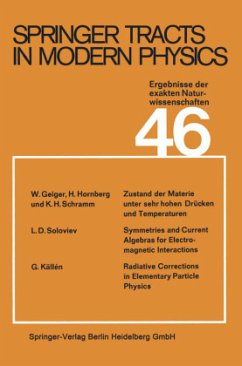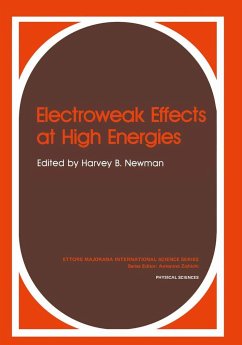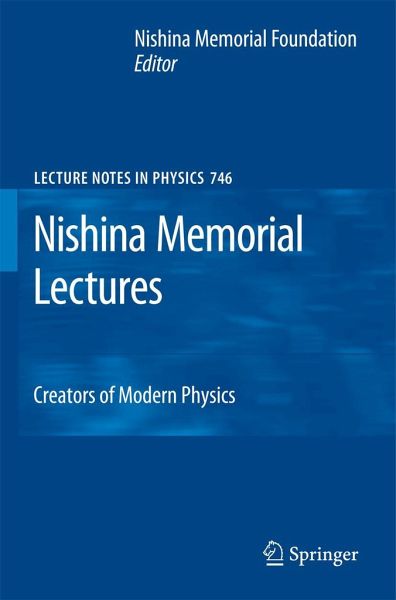
Nishina Memorial Lectures
Creators of Modern Physics
Herausgegeben: Nishina Memorial Foundation

PAYBACK Punkte
19 °P sammeln!
Yoshio Nishina, referred to in Japan as the Father of Modern Physics, is well known for his theoretical work on the Klein-Nishina formula, which was done with Oskar Klein in the 6 years he spent in Copenhagen under Niels Bohr during the great era of the development of quantum physics. As described by Professor Ryogo Kubo in Chap. 2 of this volume, Nishina returned to Tokyo in 1929, and started to build up experimental and theoretical groups at RIKEN. His achievements there were many and great: (1) Encouraging Hideki Yukawa and Sin-itiro Tomonaga to tackle a new frontier of physics, leading eve...
Yoshio Nishina, referred to in Japan as the Father of Modern Physics, is well known for his theoretical work on the Klein-Nishina formula, which was done with Oskar Klein in the 6 years he spent in Copenhagen under Niels Bohr during the great era of the development of quantum physics. As described by Professor Ryogo Kubo in Chap. 2 of this volume, Nishina returned to Tokyo in 1929, and started to build up experimental and theoretical groups at RIKEN. His achievements there were many and great: (1) Encouraging Hideki Yukawa and Sin-itiro Tomonaga to tackle a new frontier of physics, leading eventually to their making breakthroughs in fundamental theoretical physics that won them Nobel prizes; (2) the discovery of "mesotrons" (the name for Yukawa particles at that time, now called muons) in 1937, which was published in Phys. Rev. , parallel to two American groups; (3) construction of small and large cyclotrons and subsequent discoveries of an important radioisotope 237 U and of symmetric ?ssion phenomena by fast neutron irradiation of uranium (1939 - 40), published in Phys. Rev. and Nature; and (4) creation of a new style of research institute, open to external reseachers, an idea inherited from Copenhagen. During World-War-II his laboratory was severely damaged, and also his cyclotrons were destroyed and thrown into Tokyo Bay right after the end of the war.





